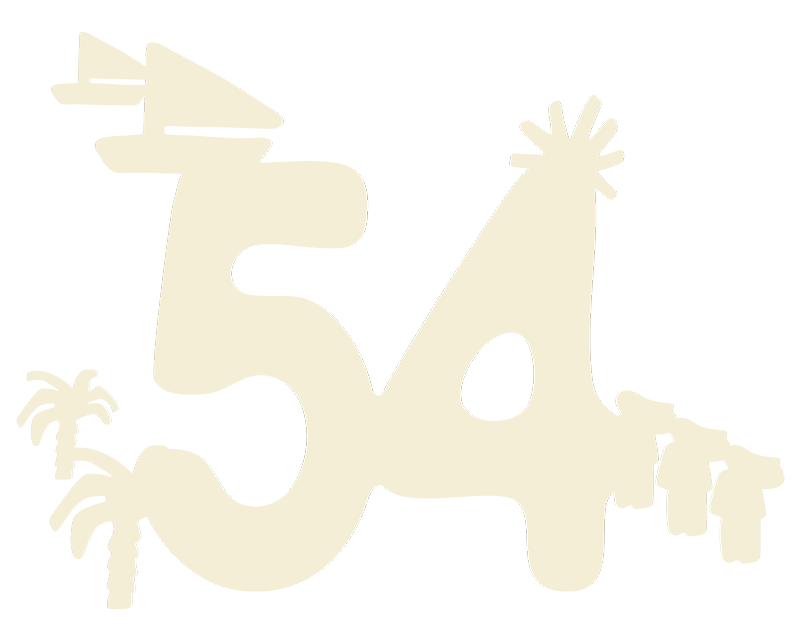
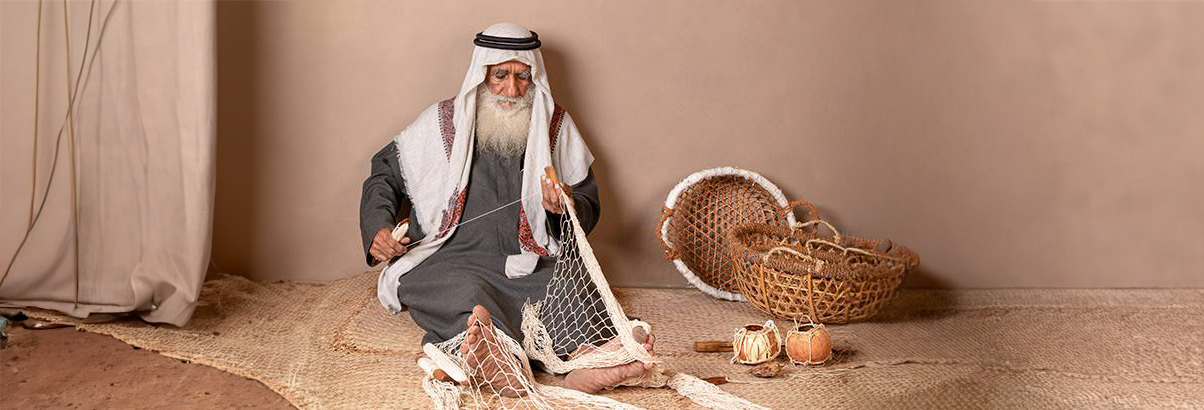
Traditional Emirati crafts represent an integral part of the UAE’s national identity and rich cultural heritage. They embody the creativity, skill, and deep connection of the Emirati people with their natural environment. In this section, you will learn more about a collection of traditional crafts that have been passed down through generations including Al-Sadu, Al-Khoos, Burqa Sewing, Dukhoon-Making, Garagir Handcrafts, and Talli.

Al-Sadu is a traditional form of weaving practiced by Bedouin women in the United Arab Emirates. Using the wool of sheep, camels and goats, women create beautiful and distinctive designs rich with geometrical patterns that often reflect both social identity and the surrounding environment.
This intricate weaving was used to create the bait al-shaar (the tent) and various Al-Sadu patterns were used to decorate the interior tent divider. Camels were also often decorated with ataad (camel accessories) made of Al-Sadu, with the woven designs adding vibrancy and colour to the saddles and straps.
In recognition of its importance, in 2011 Al-Sadu was inscribed onto the UNESCO List of Intangible Cultural Heritage in Need of Urgent Safeguarding.
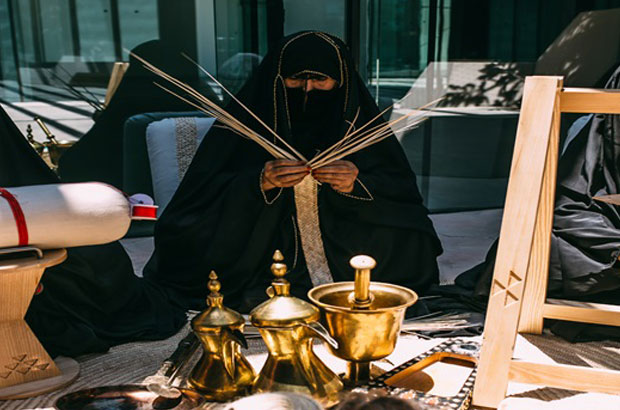
Crafting using palm fronds, or safafa, is one of the UAE’s original handicrafts, especially in areas where palm trees are abundant. Many household necessities, furniture and agricultural tools, as well as means to store and transport dates, are produced with this craft. Adding to the aesthetic versatility of palm products, wicker can be carved, braided and dyed with natural dyes, available in bright and beautiful colours.
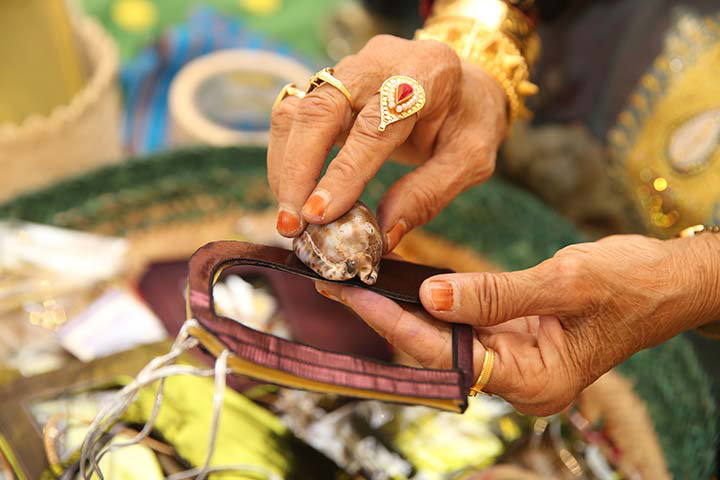
The burqa in the UAE is a unique feature that adds an element of beauty to the faces and dresses of Emirati women. Its bluish-violet colour characterises it, and it has a slight lustre. The burqa is considered one of the oldest associated cloth items of Gulf women and was even closely attached to their dresses as a reflection of their modesty before they got married.
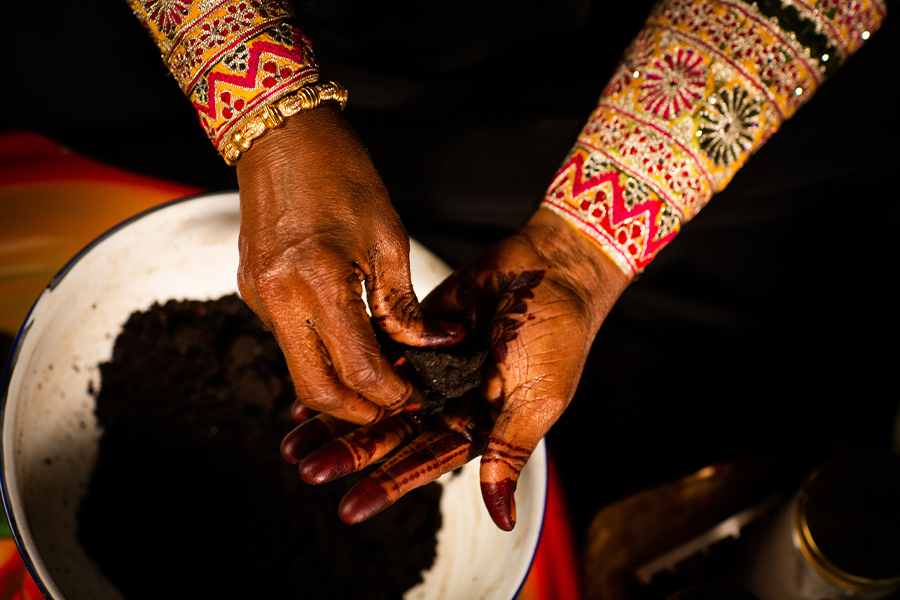
The smell of incense and perfumes has long been prevalent in the Emirati heritage. Perfumes are essential for Emirati women in their daily lives and on special occasions. Women have always been interested in all kinds of perfume, which includes many popular aromatic mixtures, such as the dukhoon, the oud, the mukhmaria, and many others that accompany women on their various occasions, such as weddings and holidays.
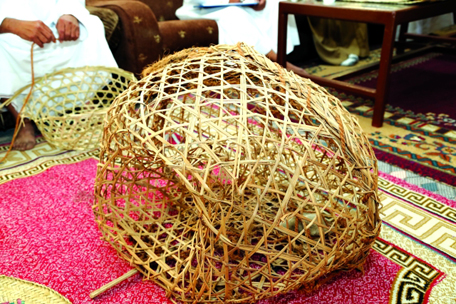
A dome-shaped , cage -like trap, gargoor (plural garagir) was used in fishing all year around. They were left on the seabed for between three to five days during winter, when fish are more abundant, and for anything up to three weeks in summer. Gargoor traps were traditionally built by specialist trap makers using locally sourced palm fronds, nowadays they are made of metal wire, maintaining the same shapes and sizes. They ranged from 0.60 to 3 meters in height, depending on the type of fish that was being caught and the depth of the water in which they were thrown.

This women’s craft is widespread in the UAE. The Talli is a ribbon decorated with intertwining white, red or silver threads. The ‘kojoja’ is used in the work of the talli, which is the main tool used for embroidery, consisting of a metal base in the form of two funnels attached to the head, with two rings on one of the bases to install a circular cushion on which gold and silver threads are wrapped to carry out the embroidery process.